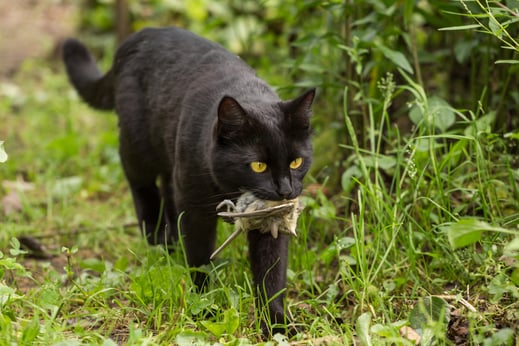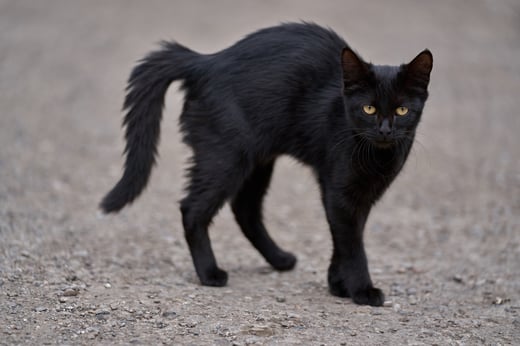As the days get closer to Halloween, you might cross paths with a black cat outdoors and think you are about to have some bad luck! While this is an extremely prevalent superstition, the “spookiest” part of seeing an outdoor cat could actually be knowing the amount of deaths they cause to native bird and mammal populations.
The fear of black cats in European culture is often traced back to Greek mythology, where Hecate, the goddess of sorcery and witchcraft, was assisted by a black cat. In the 13th century, black cats were also declared an “incarnation of Satan'' by Pope Gregory IX. As time went on and Christians began persecuting people they believed to be witches, black cats were then linked with witches and persecuted as well.
However, the real threat that should be felt from outdoor cats is how many small mammals and birds they kill every year. In 2013, a team from the U.S. Fish and Wildlife Service and the Smithsonian Institute released a startling research paper that estimates that free-ranging domestic cats kill 1.3–4.0 billion birds and 6.3–22.3 billion mammals annually, in just the contiguous U.S. alone. While people often appreciate their ability to help control pests such as mice and rats, we cannot control for all of the other species that they hunt.
 A Black Cat With Bird in Mouth
A Black Cat With Bird in MouthThe majority of cat mortality in the U.S., about two thirds, is caused by stray cats. However, that still leaves an estimated 800 million bird deaths a year attributed to pet cats. And predation is not the only threat to bird species populations, there are still many other factors such as habitat loss and climate change that are serious threats to declining native species.
There are no good solutions for cat owners except for trying to keep their cats inside and trying to not attract feral cats by feeding them. If you want to protect birds at home, you should keep feeders away from where cats can climb or hide nearby. The stray cat population will likely never disappear and there are ethical concerns with programs such as trap-neuter-return. If a cat must be outdoors, there are effective products like Birdsbesafe collars cats can wear. Homeowners can also install in-ground electric fences to keep cats in their yards. But just knowing the threat outdoor cats pose and doing what you can to mitigate it is an important step for any cat owner or animal lover.

Reese Farrow is a Naturalist at Walking Mountains Science Center and his family owns a pair of cute black cats but they thankfully stay indoors.









